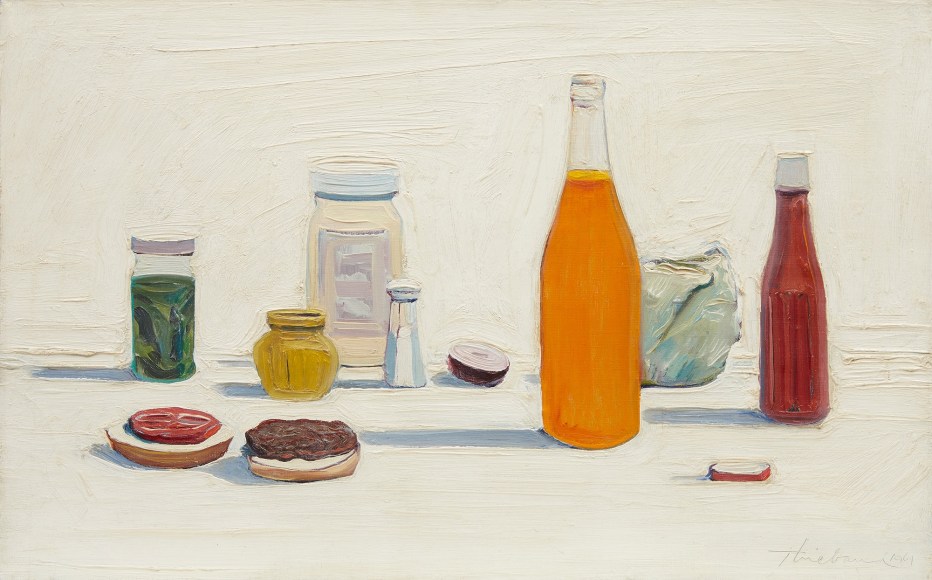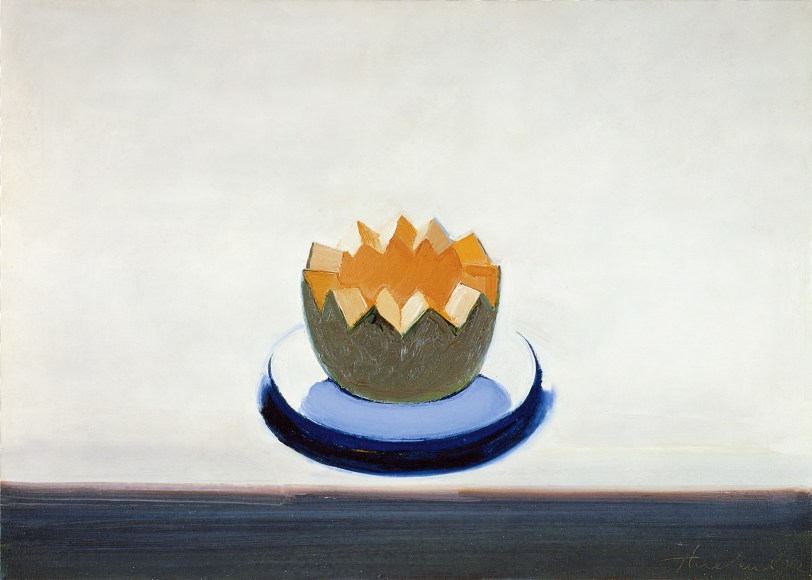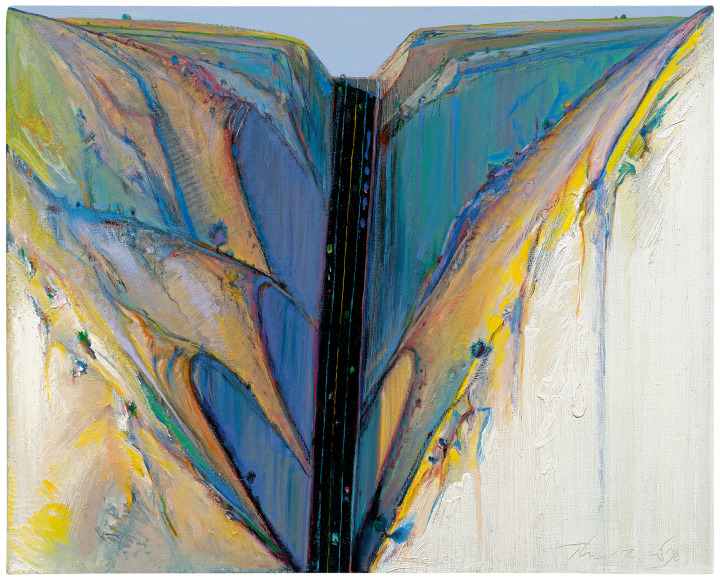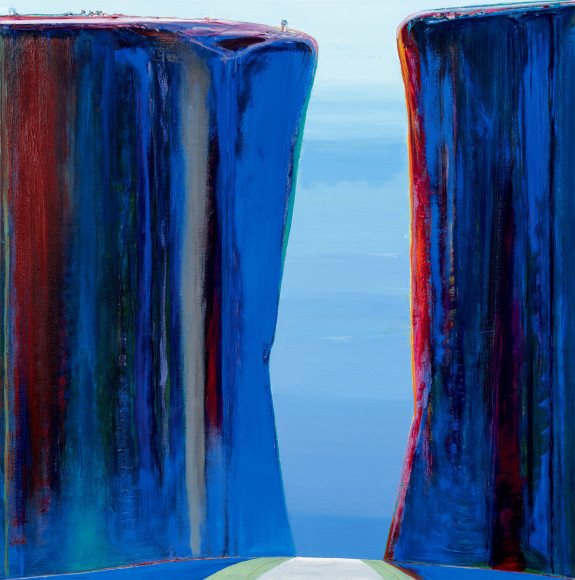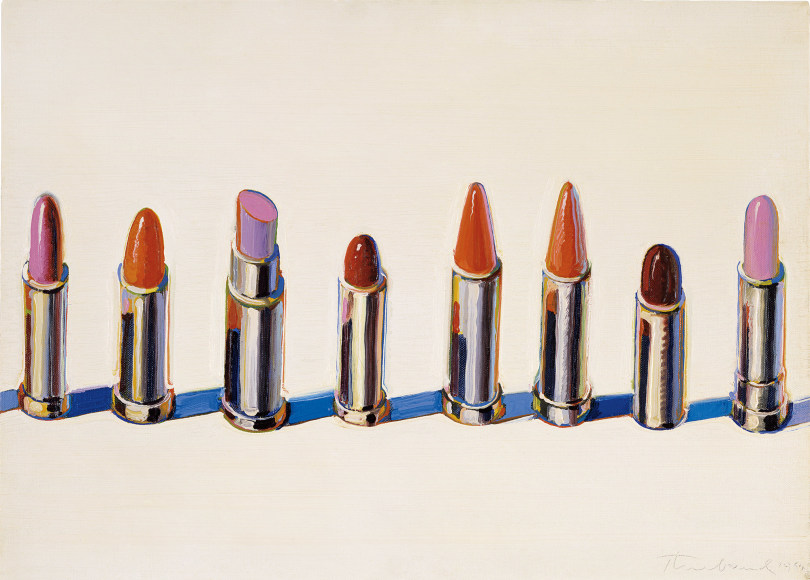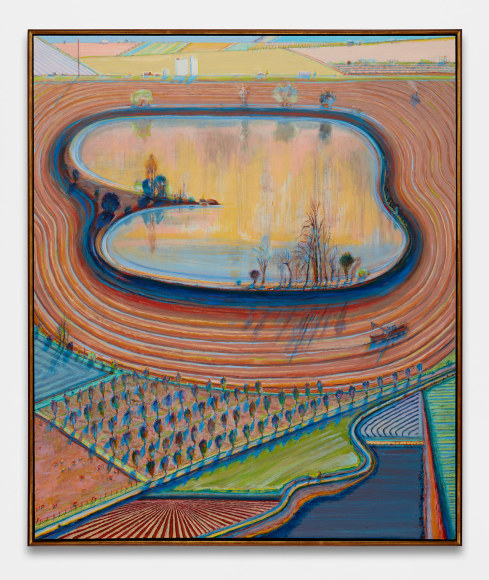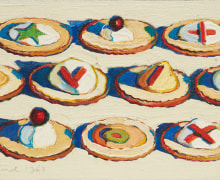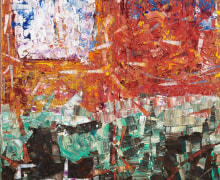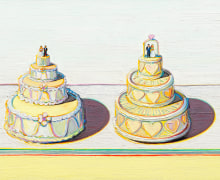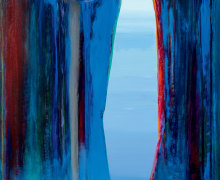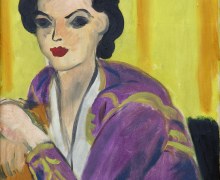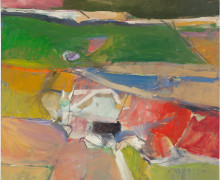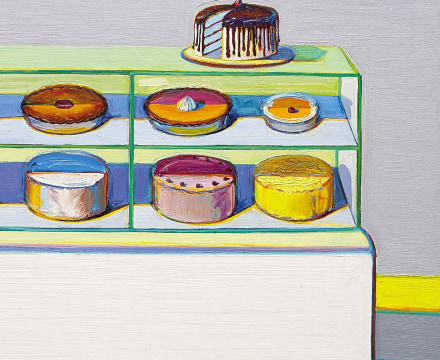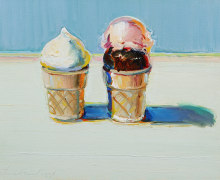
Wayne Thiebaud was born in Mesa, Arizona, in 1920, and was raised in southern California. He admired cartoons and comic strips from a young age and began his career as a commercial artist in his teens. He worked as a sign painter and apprenticed as an animator for The Walt Disney Studios before serving in the United States Army Air Force during World War II. After his service, he continued to work as a commercial artist—designing movie posters, making cartoons, and working in advertising—before pursuing the study of fine art in the late 1940s. Studying under the G.I. Bill, Thiebaud earned his bachelor’s and master’s degree from the California State University in Sacramento. While still in graduate school he began his teaching career, working as an art professor for eight years at Sacramento Junior College before joining the faculty of the University of California Davis. Thiebaud has enjoyed a long and distinguished career as a teacher, and after retiring at age seventy, he continued to give popular classes as professor emeritus. Apart from a sabbatical year spent in New York in the late 1950s, Thiebaud has worked in California for his entire career.
By the early 1960s, Thiebaud had begun painting the works for which he is best known, depicting quintessentially American, everyday objects in bright colors—such as cakes and pies, hot dogs and hamburgers, gumballs and lollipops, and jackpot machines. Rather than painting from life, Thiebaud represented these objects from memory, drawing from nostalgic recollections of bakeries and diners from his youth and contemporary commercial imagery. Working with thickly applied paint, Thiebaud often spotlights his objects against pale backgrounds with the well-defined shadows characteristic of advertisements. In order to heighten their chromatic intensity, he outlines his forms in radiant colors to achieve a halo-like effect. In addition to his still lifes, Thiebaud also painted portraits in the same style, depicting solemn figures set against light, empty backgrounds.
In 1962, Thiebaud achieved critical and commercial success with his breakthrough show at the Allan Stone Gallery in New York, followed by his first solo museum show at the de Young Museum in San Francisco. Although he is often classified as an American Pop painter—and he was included in the two historic and groundbreaking shows of 1962 that established the movement—Thiebaud never embraced the mantle of Pop and preferred to describe himself as a traditional painter of illusionistic forms. He has created still lifes, landscapes, and portraits that are familiar and quotidian, but also deeply indebted to the history of art, from the masters of European and American painting to traditional Chinese landscapes and Japanese woodcuts.
After settling in San Francisco in the early 1970s, Thiebaud embarked on a series of landscapes and cityscapes, painting the steep hills and vertiginous inclines of the city in colorful, dramatic canvases. With his characteristic vibrant palette and meticulous technique, he represented dizzying, upended views of San Francisco’s streets and buildings. In the late 1990s he began a series of landscapes of the Sacramento River Delta, painting the watery landscape and surrounding fields in pools of unexpected, vibrant hues. Rejecting traditional perspective, he largely disregarded the sky or horizon line in favor of flat, aerial views. Since the early 2000s, Thiebaud has focused on his series of mountains, depicting dramatic close-up and cross-section views of fantastic, towering summits with luminous colors and rich textures. These works merge fiction and reality, drawing from the artist’s memories of mountains he had seen in childhood. Conveying a sense of the sublime, they are also influenced by the history of landscape painting of the American West.
Alongside his landscapes and portraits, Thiebaud continues to paint his signature still lifes of everyday items. Experimenting with color, texture, light, and composition, he has repeatedly tackled the same subjects to challenge and explore the formal possibilities of painting. He continues to live and work in Sacramento today.
Since 2012, Acquavella Galleries has held four exhibitions of Thiebaud's work. Most recently, Acquavella exhbited Wayne Thiebaud Mountains: 1965-2019 in November-December of 2019.
Photo by Betty Jean Thiebaud, 1961.

